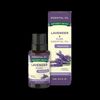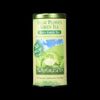A receding hairline often occurs due to age and genes, but some eating habits and using certain medications may promote hair health, and in some cases, restoration.

- Eating a healthy diet
- Medications
- Herbal remedies
- Hair transplant
- PRP therapy
- Switch to a gentle shampoo
- Low level light therapy
- Essential oils
- Scalp massage
- Change your hairstyle
- Lower DHT levels
- Manage stress and anxiety
As we age, it’s normal for our hairlines to move slightly higher above the forehead. For men, this can start in their late teens or early 20s.
It’s difficult to stop hairline recession once it has started. For many people, hair loss is caused by a combination of genetics and aging.
If you’re experiencing hair loss, know that there are a growing number of therapies, treatments, and at-home remedies that can help improve hair health and appearance.
A receding hairline is most often linked to aging and hereditary factors.
Other factors can contribute to a receding hairline and aggravate hair loss. These factors include:
- over-styling hair (especially with heat)
- choosing tight hairstyles like cornrows and braiding
- using chemicals such as bleach and peroxide to color hair
- eating a
diet that’s high in saturated fat , processed foods, preservatives, and sugar smoking cigarettes - inflammatory scalp diseases like lupus or frontal fibrosing alopecia
While no treatment will stop a receding hairline, there are health strategies and treatments that can keep your hair looking fuller for longer.
Eating a healthy diet
Eating a diet that’s high in antioxidants may help your hair look healthier and full.
Antioxidants are ingredients that fight oxidative stress, which can contribute to hair aging. Blueberries, spinach, kidney beans, and walnuts are all rich in natural antioxidants.
The following vitamins and minerals are an essential part of healthy hair growth:
Incorporating lots of leafy vegetables, nuts, and seeds may improve the way your hair looks and feels.

Nordic Naturals Vitamin A + Carotenoids

MegaFood Zinc Tablets
Medications
The most common over-the-counter (OTC) medication for a receding hairline is called minoxidil (Rogaine). This is an off-label use for Rogaine.
Research has shown topical minoxidil to work better than a placebo. In addition, a 2015 study found that it causes new hair growth in approximately 40 percent of people who use it. Minoxidil is also the key ingredient in this 5 percent topical solution by Keeps.
Finasteride (Propecia) is a prescription medication that lowers the hormone levels that can cause your hairline to recede. When taken orally, finasteride has been found to promote scalp hair growth and stop hair loss.
These products are sold by our partners Hims, Keeps, and Roman.

Keeps 5% Topical Minoxidil Foam

Hims Finasteride Prescription Hair Growth Medication
Herbal remedies
Topically applied herbal preparations may support healthier, fuller hair if you have a receding hairline.
Chinese hibiscus, ginseng, gotu kola, gooseberry, and aloe vera all have roots in traditional holistic medicine as hair loss treatments. Saw palmetto is another herbal remedy that’s been found to slow down or stop hair loss. It’s used as an active ingredient in several shampoos and conditioners, like this one by For Hims.
You can mix several herbs in a carrier oil solution to create a conditioning treatment to leave on your scalp.

Hims Thickening Shampoo

Happy Head Thickening Shampoo
Hair transplant
A hair transplant is a procedure in which a doctor moves hair from the back of your head to the front of your head, at your hairline. These implanted sections of hair can give your hairline a fuller appearance.
There are risks associated with a hair transplant, and this procedure isn’t covered by health insurance. Speak with your doctor to find out if you’re a good candidate for a hair transplant.
PRP therapy
PRP (platelet-rich plasma) therapy is another option. With this procedure, a small amount of blood is taken from your arms and is then spun into a centrifuge machine to separate out the platelet-rich plasma. The plasma is then injected into the scalp area where growth is needed. The results rejuvenate and repair the hair follicle, stimulating new growth.
Switch to a gentle shampoo
Some shampoos are specifically designed to be gentle on your hair and to stimulate the hair follicles. While some shampoos contain chemicals that strip sebum (oil) from your scalp and can be harsher on the hair, others may help stimulate hair growth.
The active ingredient in these shampoos is ketoconazole. Research from 2020 suggests that it can promote hair growth in many cases.

Keeps Ketoconazole 2% Hair Loss Medication

Nizoral A-D Shampoo with 1% Ketoconazole
Low level light therapy
Low level light therapy uses lasers to stimulate hair growth on your scalp. A 2015 study found it to be effective for both men and women experiencing hair loss.
The researchers suggest that the light sends a signal to your cells to begin the anagen (growth) phase of hair follicles.
Essential oils
Some essential oils may also promote hair growth. Rosemary oil, peppermint oil, and lavender oil have all been found to be promising treatments for a receding hairline.
Essential oils should always be mixed with a carrier oil, such as almond oil, coconut oil, or jojoba oil, before being applied to the scalp.

NOW Foods Peppermint Oil

Nature's Truth Lavender Essential Oil
Scalp massage
Regularly performed scalp massage may help you grow thicker, healthier hair, research from 2016 suggests.
Increased blood circulation at the site of your hairline could be why scalp massage works to stimulate hair follicles. Try massaging your scalp manually for at least 4 minutes each day.
Change your hairstyle
Changing the way you style your hair is a small, easy way to prevent hair loss. Brushing your hair too much, being rough with your hair, and wearing certain tight hairstyles are all factors that can contribute to a receding hairline.
The goal isn’t to hide your hairline — it’s to take attention away from thinning spots, such as around the temples or the top of the hairline. If you’re worried about hair loss, consider these hairstyles:
- Keep the hair long on the top to pull into a fohawk. The texture will give the illusion that there’s more hair than there is. Pair this with sides that are clean-shaven and well groomed for a polished look.
- Try a side part to keep the hair out of your eyes.
- Buzz the hair. This is a good option if your hair is already short or if you want to make your grooming routine as minimal as possible. Buzzing the hair may also make your hairline look less noticeable.
Lower DHT levels
Dihydrotestosterone (DHT) is a hormone in your body. When DHT levels rise, hair loss may increase.
You can decrease the DHT levels in your body by including certain foods in your diet. For example, research suggests that green tea (and its epigallocatechin gallate content), turmeric (particularly its compound curcumin), and soy (edamame) may help you lower DHT.

The Republic of Tea Decaf People's Green Tea Bags

Sports Research Turmeric Curcumin Softgels
Work to manage stress and anxiety
Stress has been linked to certain kinds of hair loss. Managing stress and anxiety levels may seem easier said than done though.
Research has found that you can lower your stress levels through frequent exercise, time outside, relaxation techniques, and meditation.

CBDfx Calming Tincture
Keep in mind that some hair shedding is normal. Mass hair loss is not.
If you’re experiencing mass hair loss, bald spots, patchiness, or other unusual hair loss symptoms, talk with your primary care physician or dermatologist. Hair loss can be a sign of an underlying health condition.
With the right treatment plan, a receding hairline can often grow back. A plan may include clinically proven hair loss treatments, natural remedies, or a combination of both.
Male hair loss treatments are suitable for all hair types, including tight curls and kinks. A hair loss expert will take certain factors into account during your visit, such as the density and texture of your hair.
While a receding hairline is a sign of male pattern baldness, it’s natural for your hairline to change as you age. A receding hairline doesn’t always lead to baldness, and many treatment options are available to stop the hairline from receding further.
There’s no one proven way to stop your hairline from receding once it’s started. But there are many more options than there used to be for making the hair that you do have more resistant to falling out.
There are OTC hair loss treatments, and even some home remedies that may be helpful, but you should always start with a dermatologist or your primary care physician.
Note that hair loss treatment strategies will work differently for everyone, so it’s important to talk with a doctor about the right one for you.

